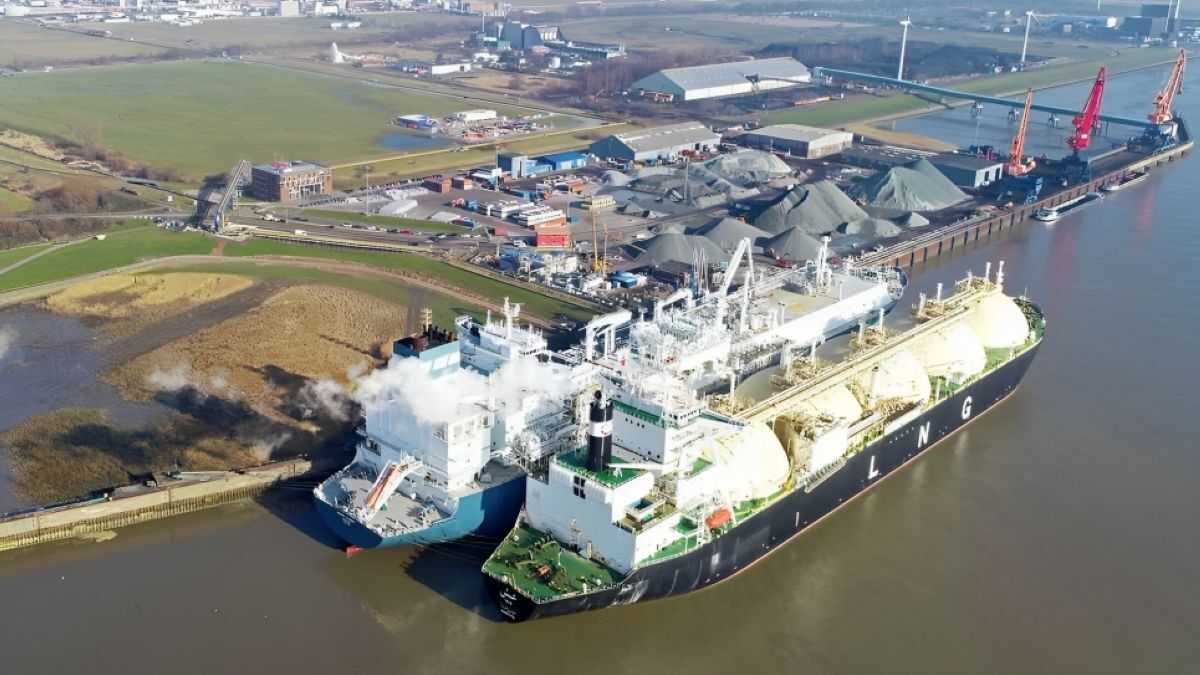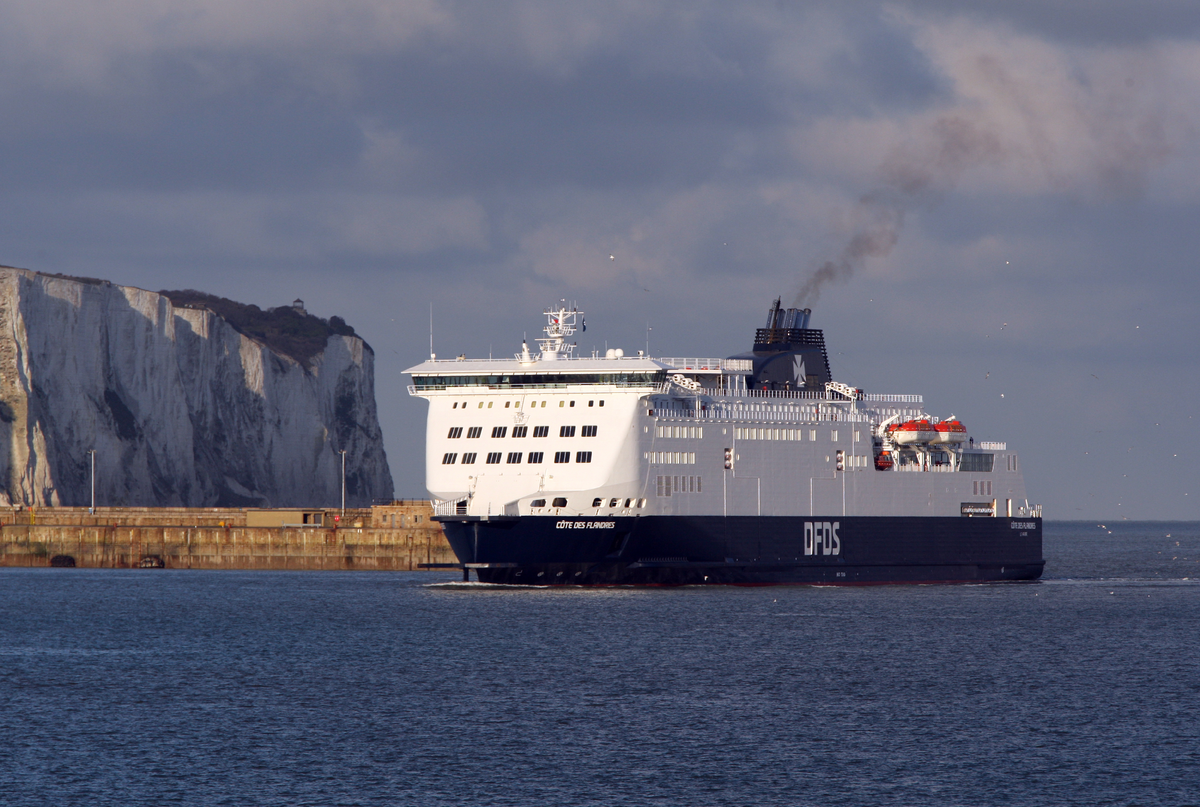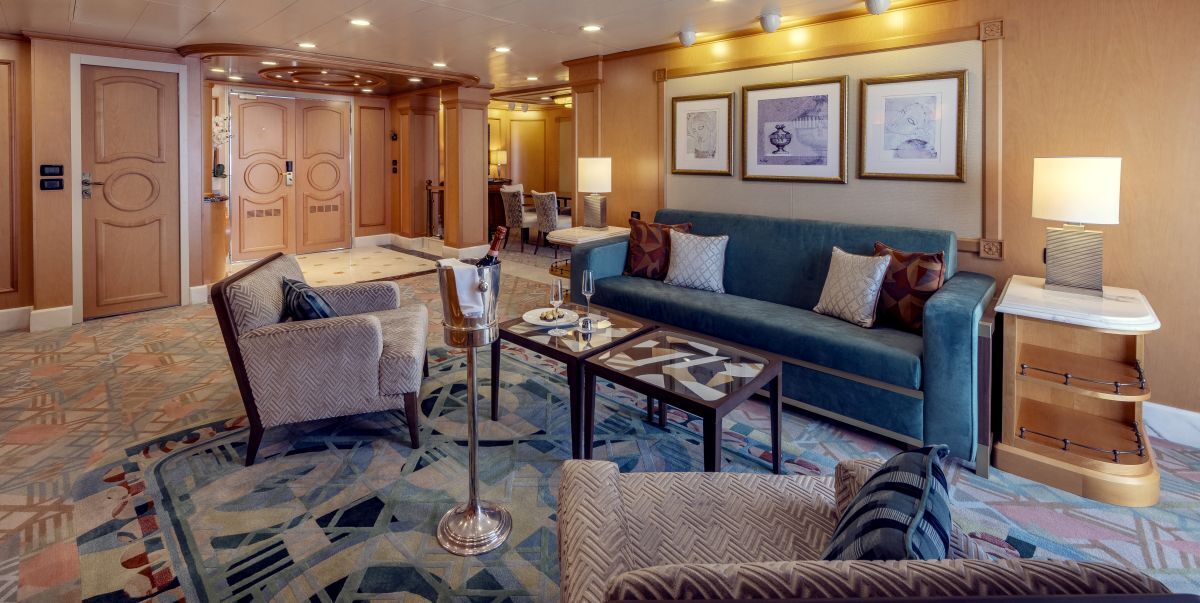Business Sectors
Events
Contents
Are scrubbers the alternative to low sulphur fuel?
As new regulations come into force, the pressure is on to produce technology that can clean exhaust gases as an alternative to using low-sulphur fuel oil
As new regulations come into force, the pressure is on to produce technology that can clean exhaust gases as an alternative to using low-sulphur fuel oil
All ships at berth for longer than two hours in European Union ports have been required to reduce emissions of oxides of sulphur (SOx) by switching to marine fuel oil with a sulphur content of 0.1 per cent or less since 1 January 2010.
On 1 July 2010 the revised Marpol Annex VI came into force. It includes the tightening of the maximum fuel-sulphur limit in emissions control areas (ECAs) from 1.5 per cent to 1.0 per cent, and on 1 January 2015 the limit will fall even lower, to 0.1 per cent. Moreover global standards require SOx emissions to be reduced from today’s 4.5 per cent to 3.5 per cent in January 2012 and to 0.5 per cent in January 2020 subject to a feasibility review to be completed no later than 2018.
The environmental advantages of this are obvious but behind the scenes there are challenges. These include the availability of low-sulphur fuel oil (LSFO) to meet future demand, which the regulations will drive, its increased cost and the higher operating costs of converting heavy fuel oil (HFO) engines to burn LSFO.
There are other considerations, of an environmental nature, as Rich Pruitt, director environmental programs, environmental stewardship, Royal Caribbean Cruises Ltd, told PST: “For the world to comply with low-sulphur rules we will need 30 per cent more tankers to bring LSFO to where it is needed. So is there actually a net environmental benefit?”
The global average sulphur content in fuel is about 2.5 per cent, so up until 2012 the LSFO requirement is achievable but come 2015, meeting the 0.1 per cent ECA limit will mean using distillate.
Cost is probably the biggest hurdle. Olaf Knueppel, managing partner at Couple Systems, points out that the availability of crude oil with low sulphur content is limited and that the desulphurisation process of the crude oil in the refinery is costly with regard to the process and energy requirements. What this means in the long term is that LSFO will be far more expensive than HFO. He says: “The necessary refinery capacity to implement the legislation cannot be created before 2020,” and that “costs of US$180 billion are quoted for building such a capacity”.
Similarly the Carnival group has expressed its concerns. The leading cruise brand estimates that implementation of the 0.1 per cent low-sulphur content requirement in the two existing ECAs and the proposed US and Canadian ECA would increase its annual fuel costs by US$100-130 million. Furthermore Michael Crye, Cruise Lines International Association’s executive vice president of technical and regulatory affairs, has been reported as saying that cruise companies operating in the now approved 200 miles (322km) ECAs along the entire North American coastline would see fuel bills rise by 40 per cent.
Certainly when comparing bunker fuel prices in a key cruise hub like Miami at the time of writing, the concerns of the cruise sector are easy to recognise. IFO380 bunker fuel, which costs about $470 per tonne, contains an average of 2.6 per cent sulphur oxide (SOx) and will effectively be banned from use in ECAs. Meanwhile fuel with less than 0.1 per cent SOx is almost US$700 per tonne – a near 50 per cent increase.
There is, however, an alternative to burning low-sulphur fuel. This is to use exhaust gas cleaning systems or scrubbers. Peter Toombs, president of Marine Exhaust Solutions, says, “With scrubbing technology, operators can burn the fuel of choice and bunker where and when they want. The trick has been to come up with suitable and practical marinisation of land-based scrubbing technology.”
A scrubber cleans the exhaust gas from the engine by mixing it with water, a ‘wetting’ process that dissolves the SOx. Particulate matter (PM) also gets dragged down by the water rather than going out into the air. There are two types of system. One is the open-loop type, which uses seawater, providing natural alkanility to neutralise the sulphuric acid. The other is the closed-loop, or freshwater, system, in which the alkanility is added in the form of caustic soda, or sodium hydroxide (NaOH), to neutralise the sulphuric acid.
PM in the washwater can be physically removed through centrifugal action, which throws out the particles, which are collected for disposal ashore. The remaining water is then ready for discharge. Both the exhaust gas and washwater are monitored by sensors, data from which are recorded, along with the ship’s speed and date.
The benefits could be significant in economic terms. Wärtsilä is working on scrubber technology and estimates that come 2015, when the 0.1 per cent limit kicks in, the cost savings of using such technology will be substantial with a return on investment in one to three years.
A number of manufacturers have systems available but it is early days as far as installations on ships are concerned. Tom Strang, Carnival’s vice president policy and regulation, maritime policy and compliance, told PST: “There are no two ways about it; scrubbers will work but we need to see reliable technology and, in particular for saltwater scrubbers, there are still issues concerning the washwater discharge. At the moment the challenge remains the ability to use the scrubber continuously and the difficulty in getting the washwater criteria established by IMO as acceptable in all areas.”
Again the issue of net environmental benefit is raised by Carnival. As Mr Strang points out: “Fitting a scrubber system in many cases will increase CO2 because of the amount of power used to run it.”
While many operators are monitoring this technology rather than actually ordering it, there are exceptions. Hamworthy Krystallon (HK) received the first commercial order for its seawater scrubbers from Italian owner Ignazio Messina recently. Each of four 45,000 dwt roro vessels under construction at Daewoo Shipbuilding and Marine Engineering will be fitted with five scrubbers – four units for the auxiliary engines (each of 2MW) and one unit for the auxiliary boiler (2.5 tonnes of steam per hour). All of the scrubbers will be housed in the ship funnel casings. Equipment will also include a control system, combined washwater treatment plant and a new range of super duplex stainless steel pumps. HK managing director Sigurd Jenssen says, “This is an important milestone, not just for Hamworthy Krystallon but also for exhaust gas scrubbing in the marine industry in general. Messina, DSME and Hamworthy are all leading names in the shipping industry, demonstrating our collective view that seawater scrubbing will become a mainstream marine technology.”
Prior to this HK was the first to trial a seawater scrubber on a cruiseship. In April 2007 one unit was installed on one of five diesel generators on Holland America Line’s (HAL’s) Zaandam. The aim of this pilot project, funded by the US Environmental Protection Agency, Puget Sound Clean Air Agency and other partners, was to evaluate whether a seawater scrubber could be successfully installed on an existing cruiseship and to test its effectiveness in eliminating SOx and PM from that marine diesel engine, explains HAL’s Tina Stotz, manager sustainability and ISO systems management.
A stack test by the Emissions Research and Measurement Division of Environment Canada’s Environmental Technology Center in September 2007 found that the scrubber eliminated about 75 per cent of SOx and 57 per cent of PM generated by the engine as measured by the differences in mass of emissions between the inlet and outlet.
Ms Stotz said that the pilot project was suspended in September 2008 after HAL personnel observed soot being discharged overboard along with the scrubber washwater. HAL and HK are now working on system improvements to eliminate the soot discharge. The company is in the process of upgrading the scrubber and once the work is completed in August it will be tested again.
HK has also had a system working with one Sulzer AT25 8-cylinder auxiliary engine on P&O Ferries’ Pride of Kent since December 2005. Its installation aimed to prove the viability of the Krystallon design. It now has more than 30,000 operating hours behind it and HK reports that it scrubs exhaust gas to well below the limits imposed by IMO regulations. In addition the system removes 50-70 per cent of PM.
Before the HK installation, Marine Exhaust Solutions had installed eight of its EcoSilencers on board the same ferry for three years from 2003. They were then decommissioned. “The data collected was instrumental in bringing regulations to where they are today,” explained Mr Toombs, who says his company has been working for 10 years on trials and development.
The company has commercial orders for its C-series EcoSilencers for installation on a 10,000 dwt Canadian bulk carrier this autumn that is trading in the North American ECA. This system will work with a 3.25MW engine. Marine Exhaust Solutions also has orders for two further 100,000 dwt bulk carriers in 2011 that will be trading in the North Sea and English Channel. The company claims the system will remove up to 97 per cent of SOx, 80 per cent of PM and 5 per cent of NOx.
Meanwhile Royal Caribbean Cruises Ltd has announced a partnership with Ecospec to install a pilot test of the manufacturer’s CSNOx system on Royal Caribbean International’s Independence of the Seas. The system was introduced in January 2009 and is reported to remove SOx, NOx and CO2 from engine emissions in one process.
When PST spoke to Mr Pruitt in June, he said: “We were more than sceptical when Ecospec came out and it took a little faith to work with people claiming they could do the impossible. But when you turn the scientists loose a lot of great things start happening and from a professional and personal standpoint I am really excited about the exploration and discoveries being made.”
In Mr Pruitt’s view the ‘achilles heel’ of scrubber technology right now is the washwater. He adds, “We decided to go with the closed-loop option so we can use open or closed and don’t have to discharge.”
Ecospec is also working on projects outside the passenger shipping sector. The CSNOx open-loop system is being tested on Tanker Pacific’s 100,000 dwt tanker White Sea and the results at 50 per cent load point, verified by an ABS statement of fact, revealed a 99 per cent reduction of SOx, 66 per cent reduction of NOx and a 77 per cent reduction of CO2. In addition washwater test results surpassed the IMO’s exhaust gas cleaning discharge criteria. Type approval verifications are due to be completed at the end of August 2010, according to Tany Tan, general manager Ecospec.
Ecospec is also working with Canada Steamship Lines (CSL) to develop and install new technology on the CSL fleet in the Great Lakes. An installation will be made later this year on one vessel to “validate and obtain certification of the performance and efficiency of the system in a fresh water environment”.
Ecospec says CSNOx reduces SOx, NOx and CO2 from emissions of ocean trading vessels in one process and in a single system without using chemicals. Instead the company uses its patented ultra-low frequency waves to treat water to absorb or break down the gases. Ms Tan says: “In areas where discharge is prohibited, we have various options for shipowners to select.”
The company lists the benefits of its CSNOx abatement technology as meeting 0.1 per cent low-sulphur fuel emission criteria without the need to use distillate fuel or modify the fuel system to accommodate the use of distillate. It says it meets NOx Tier 1, 2 and 3 requirements and surpasses all present international GHG mitigation targets.
Michael Crye, executive vice president of Cruise Lines International Association, says of CSNOx: “It is a silver bullet if it works,” while adding, “The problem of when and where ships can discharge washwater are issues that must be dealt with because you must have reassurance that you can in fact use technology before undergoing the significant investment in developing it.”
Denmark’s Aalborg is another company that is working on scrubber technology. It has installed its combined/hybrid system on a 21MW MAN 9L60MC-C, the main engine of DFDS’s roro Tor Ficaria. In harbour, for example, the system uses freshwater and caustic soda; in open water it uses seawater. Since the end of June 2010 the scrubber has been in continuous operation cleaning the exhaust gas of SOx in accordance with IMO criteria for 2015 ECAs, says the company.
Wärtsilä’s SOx scrubbing unit has been under test since late 2008 cleaning exhaust gases from Neste Oil’s product tanker Suula’s 4-cylinder inline Wärtsilä 20 auxiliary diesel engine of rated power 680kW. Tests on high-sulphur (3.4 per cent) and low-sulphur (1.5 per cent) fuel showed a sulphur dioxide removal efficiency above 99 per cent in all operating conditions, according to Wärtsilä.
The company’s scrubber technology has been granted a SECA compliance certificate by Det Norske Veritas and Germanischer Lloyd (GL) and is the first marine scrubber to achieve the certification, according to Wärtsilä. The closed-loop fresh water system enables zero water discharge in enclosed areas.
Couple Systems has developed a two-stage system for cleaning the exhaust gas of marine diesel engines, the DryEGCS process. In the first stage the exhaust gas is fed through a fixed-bed filter with calcium hydroxide granulate, which neutralises sulphur oxide. The second stage includes selective catalytic reduction (SCR), which converts the nitrogen oxides into harmless nitrogen and water
A pilot installation of the system on cellulose freighter Timbus has been certified by GL as being in compliance with IMO guidelines. The test installation started in November 2009, is ongoing and has seen more than 3,000 operating hours under test by the Technical University of Hamburg in Harburg. The results are said to show that the system is removing 99 per cent of SOx and more than 80 per cent of PM. In addition an SCR catalyst is removing 98 per cent of NOx.
Another potential technology supplier, Belco Technologies, is preparing to install its scrubber on a container ship. It is essentially the same scrubbing system that the company markets for use on land. IT uses both fresh water and caustic soda or seawater. The company’s goal is to provide shipowners with a choice of using high-priced, low-sulphur diesel on the one hand or, on the other, using the present lower-priced, high-sulphur bunker fuel and reducing the emissions by applying one of its scrubbing technologies. The company says it is sure it can reduce SOx and PM to almost zero.
Companies active in this field are working together to get across the message that a scrubber is a viable alternative to low-sulphur fuel. With this aim in mind the Exhaust Gas Cleaning Systems Association was established in 2008. Current members include Aalborg Industries, Advanced Cleanup Technologies, Cleanmarine, Couple Systems, DuPont Belco Clean Air Technologies, Hamworthy Krystallon, MAN Diesel, Marine Exhaust Solutions, Wärtsilä Corporation and Yarwil AS. PST
Related to this Story
Events
Maritime Environmental Protection Webinar Week
Cyber & Vessel Security Webinar Week
The illusion of safety: what we're getting wrong about crews, tech, and fatigue
Responsible Ship Recycling Forum 2025
© 2024 Riviera Maritime Media Ltd.













